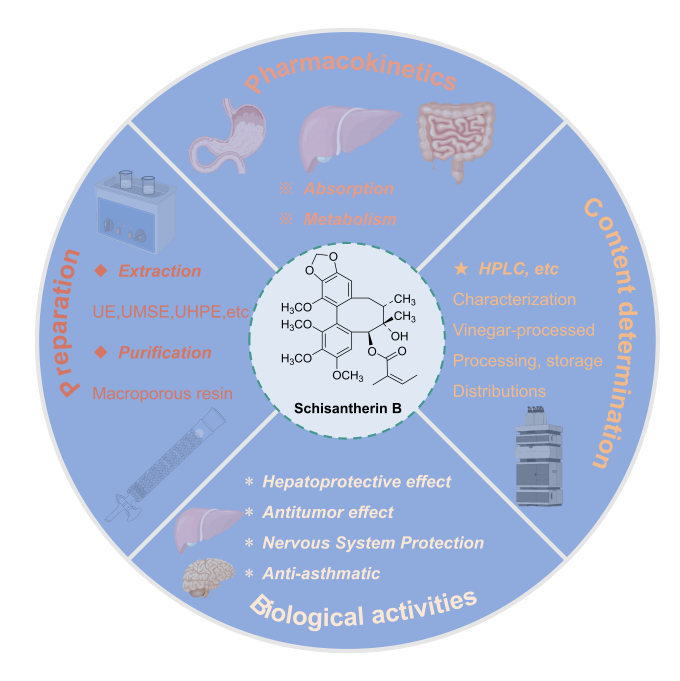JOURNAL 3192
Records of Natural Products
VOLUME & ISSUE
Available Online: June 10,2024
Available Online: June 10,2024
PAGES
p.1 - 16
p.1 - 16
DOI ADDRESS
http://doi.org/10.25135/rnp.462.2404.3192 (DOI number will be activated after the manuscript has been available in an issue.)
http://doi.org/10.25135/rnp.462.2404.3192 (DOI number will be activated after the manuscript has been available in an issue.)
STATISTICS
Viewed 341 times.
Viewed 341 times.
GRAPHICAL ABSTRACT

ABSTRACT
Schisandra chinensis (S. chinensis) is the dried mature fruit of Schisandra chinensis (Turcz.) Baill. Its primary active elements include polysaccharides, lignans, and other substances, and it is essential for neuroprotection, hepatoprotection, anti-inflammatory, antioxidant, and other functions. One of the components of lignan, schisantherin B (STB), is commonly extracted using ultrasonic extraction or a combination of ultrasonic and microwave techniques. The macroporous resin method is used to purify the extract at first. Pharmacological studies have shown that it has hepatoprotective, antitumor, and neuroprotective effects, among which hepatoprotective effects are more prominent, mainly by reducing the activity of intrahepatic ghrelin transaminase and improving liver damage. In addition, the pharmacokinetic analysis demonstrated that STB was well absorbed in vivo and was mainly in the form of passive transport in the gastrointestinal tract. The metabolic pathways in rats were also relatively diverse. At the same time, its content is related to the herb's traits, processing, storage methods, distribution, and other aspects. Therefore, the preparation, pharmacological effects, pharmacokinetic characteristics, and content determination of STB will be summarized, aiming to improve its knowledge system and provide a theoretical basis for subsequent more in-depth studies. KEYWORDS
- Schisandra chinensis
- Schisantherin B
- Preparation
- Pharmacological effects
- Pharmacokinetic
- Content determination